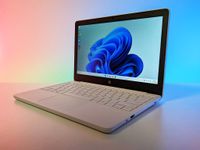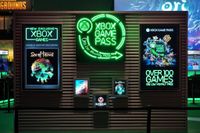Microsoft Updates UI Design and Interaction Guide to 2.0--we review it

We don't know almost you, but we've pretty excited about this Windows Phone 7 affair. The closer we get to that Oct(ish) release, the more desperate we become for all the juicy details on what to expect from Microsoft's new mobile OS. Most of the information that we have on Windows Telephone seven up to this betoken has come from developer resource and documentation. The Microsoft UI Pattern and Interaction Guide for Windows Phone 7 is an attempt to communicate Microsoft'due south design and UI principles to developers in the hopes of maintaining some level of consistency. The full guide is available from Microsoft (PDF link).
We've gone through the guide for you and broken out some of the guidelines/specs that we either haven't heard or at least haven't had confirmed. Get all of the details later the break and so let united states of america know what you think in the comments.
Start Carte (pg 14)
- Start is e'er presented in portrait view.
- Kickoff is a reserved infinite and only users tin can identify tiles in this area. Windows Phones come with pre-placed tiles installed by Microsoft, phone manufacturers, and phone service providers.
![]()
Status Bar (pg 15)
- Signal strength, data connectedness, call forwarding, roaming, wireless network betoken strength, bluetooth status, ringer mode, input status, battery power level, organisation clock.
- Past default, only the system clock is always visible. If a user double taps in the Condition Bar expanse, all other relevant indicators slide into view for approximately viii seconds before sliding out of view.
- Cannot exist modified by developers, just can be hidden.

Awarding Bar (pg 16)
- Supports upwardly to four icons.

Chrome positioning (pg 20)
- Status bar is e'er located on the border of the screen closest to the Ability button and furthest from the Beginning push button no matter the orientation of the screen.
- Application bar is always located on the same edge of the device closest to the start push button and furthest from the Power button no matter the orientation of the screen.

Notifications (pg 23)
- At that place are iii methods to brandish button notifications:
- Tile notifications – Awareness notifications inform users of changes or events that may have occurred and are non-disruptive to the user workflow. They appear in Start tiles.
- Toast notifications – (Action-requested) notifications are system-wide notifications that do non disrupt the user workflow or require intervention to resolve. An example of these notifications is when the user receives a text message or instant message. These notifications announced at the top of the screen and are displayed for 10 seconds earlier disappearing.
- Raw notifications – (Activeness-required) in-application notifications are fully controlled by an application and affect just that application. These appear within an application.
First Tiles (pg 24)
- Double-width tiles are only available to Microsoft, phone manufacturers, and mobile operators.
Toast Notifications (pg 25)
- Applications must default to turn toast notifications off.


Progress Indicator (pg 30)
- Can be determinate or indeterminate. Determinate is for tasks such as downloading content, indeterminate is for tasks like establishing a remote connection.
Page Scrolling (pg 31)
- Scrolling is accomplished strictly by swiping. Whorl bars are displayed, but but to communicate to the user where they are on the page.

Metro Colors (pg 32)
- ii Background colors, black and white.
- ten Default accent colors. Magenta, Purple, Teal, Lime, Brown, Pink, Orangish, Bluish, Ruby, and Green.
- Mobile operators or Device manufacturers tin can add 1 additional color.
- Blue is the default accent color, but this can be changed by mobile operators or manufacturers.
Multi-affect (pg 47)
- Windows Phone supports upward to 10 touch points, but the hardware is only required to support 4.
Keyboards (pg 48)
- Only full alphabet keyboard layouts are supported. (No 12 or 20 key keyboards).
On-screen Keyboard (pg 49)
- eight different context-specific keyboards. Default (QWERTY), Text, Email Address, Telephone Number, Web Address, Maps, Search, SMS Accost.
Hardware keyboards (pg 50)
- Required Keys
- Messages (A-Z), Enter, Infinite, Backspace, Shift, emoticon, SYM, catamenia, and comma.
- Numbers (0-ix) every bit either a main or secondary grapheme.
- Emphasis fundamental for German, French, Italian, and Spanish keyboards.
- Unsupported Keys
- A directional pad or any other navigation specific hardware.
- The "OK & Domicile" and the "Send & End" hardware soft keys.
- The keys Delete, Insert, Control (CTRL), Alt, Caps Lock, Tab, folio up and down, and escape (ESC).
- The First, Search, and Dorsum Buttons every bit office of the keyboard.
Power button (pg 57)
- Push button press of three-viii seconds turns telephone off via software shutdown.
- Button press of more than than 8 seconds turns phone off via hardware shutdown.
Camera button (pg 59)
- Half-printing when taking pic will initiate auto-focus.
- Press and hold for more than 1 second when in standby or screen locked will actuate camera application.

Keeping information technology affordable
Review: Surface Laptop SE is the new standard for Grand-8 Windows PCs
Starting at just $250, Microsoft'south starting time foray into affordable laptops for the education market is a winner. With a gorgeous design, fantabulous thermals, and a fantastic typing experience, Microsoft would do right to sell this direct to consumers as well. Let's just hope Intel can make a improve CPU.

Exclusivity over saturation
Why Xbox Game Pass rightfully rejects the Spotify model
Spotify is often cited as a doomsday example of what Xbox Game Pass could practise to the video game manufacture. The reality is quite the opposite, Microsoft is rejecting the Spotify model, and rightfully then.

Best deals on Xbox headsets
Our meridian picks for Xbox headsets below $100
Do you fancy a new Xbox 1 headset? Do you fancy not spending more than $100? Let us assistance! At that place'due south a large range of solid audio options without breaking your upkeep. And hither are our top picks that nosotros've personally used.
Source: https://www.windowscentral.com/microsoft-updates-ui-design-and-interaction-guide-20-we-review-it
Posted by: johnsonthearle.blogspot.com


0 Response to "Microsoft Updates UI Design and Interaction Guide to 2.0--we review it"
Post a Comment